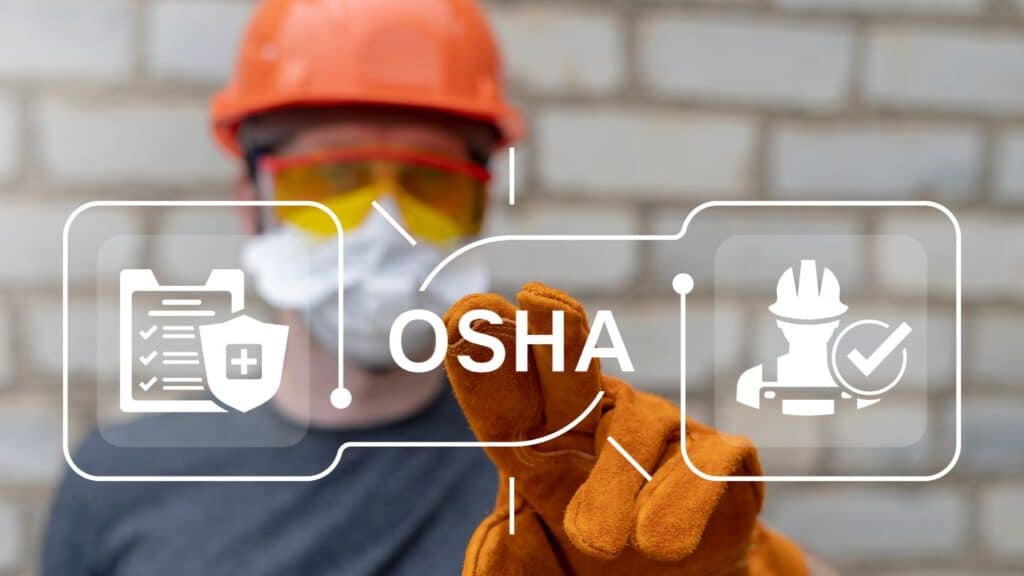Running a successful manufacturing operation involves much more than hitting production targets and maintaining quality control. A strong Environmental, Health and Safety (EHS) program is essential to keeping your workforce safe, avoiding regulatory penalties, and maintaining a positive reputation in your industry and community.
Managing EHS requirements can feel like navigating a constantly shifting landscape of regulations, training needs, inspections, and paperwork. With a structured, proactive approach, EHS compliance can become an integrated, manageable part of your operations rather than a stressful afterthought.
In this post, we’ll walk through 10 ways to manage your EHS responsibilities and build a safer, more compliant facility.
1) Understand Your Regulatory Landscape
The first step to effective EHS management is knowing what regulations apply to your facility. Environmental and safety requirements vary depending on your industry, location, processes, and materials used. Several key federal agencies play a role in EHS oversight. The Occupational Safety and Health Administration (OSHA) governs workplace safety, while the Environmental Protection Agency (EPA) regulates air, water, and waste management. The Department of Transportation (DOT) oversees the transportation of hazardous materials. In addition, state and local environmental agencies may enforce their own rules and requirements.
Start by identifying the specific EHS regulations relevant to your operations. This could include OSHA’s Hazard Communication Standard, EPA hazardous waste regulations (RCRA), air permits, stormwater management plans, or emergency planning requirements.
To stay on top of these obligations, maintain a centralized, up-to-date list of all applicable regulations, permit deadlines, and renewal dates. Regularly reviewing this master list helps ensure nothing falls through the cracks. Many companies find it helpful to use a compliance calendar or a digital tracking tool, such as an EHS Management Suite, to streamline organization, set reminders, and keep regulatory responsibilities visible and actionable.
2) Conduct a Facility Assessment
Before you can address gaps in your compliance program, you need a clear picture of where you stand today. A thorough EHS assessment can reveal compliance shortfalls, outdated procedures, and opportunities for improvement.
During your assessment, evaluate:
- Current written safety programs and environmental plans
- Training records and employee awareness
- Waste storage and labeling practices
- Chemical inventory and Safety Data Sheets (SDS)
- Permit status and reporting deadlines
- Equipment condition and hazard controls
Document all findings, categorize them by risk level, and prioritize corrective actions based on potential impact.
3) Assign Ownership and Responsibilities
One common pitfall in EHS management is unclear ownership. When “everyone” is responsible, often no one is truly accountable.
To build an effective EHS program, assign specific roles and responsibilities across your team. For instance, HR or training coordinators may take the lead on employee safety training and onboarding. Maintenance or operations teams are often best suited to manage machine guarding and lockout/tagout procedures. Meanwhile, environmental coordinators can oversee reporting, recordkeeping, and regulatory submissions.
Clearly defining these responsibilities—and communicating them across all levels of the organization—is key to ensuring accountability. Leadership support is also essential; your program will only be as strong as the commitment it receives from the top.
4) Develop and Maintain Written Programs
Most regulatory agencies require written safety and environmental plans, especially if your facility handles hazardous materials, has specific air or water emissions, or operates heavy machinery.
Common written programs include:
- Hazard Communication Plan
- Emergency Action Plan
- Lockout/Tagout (LOTO) Procedures
- Spill Prevention, Control, and Countermeasure (SPCC) Plan
- Stormwater Pollution Prevention Plan (SWPPP)
- Personal Protective Equipment (PPE) Program
Make sure your plans are site-specific, accessible to employees, and reviewed regularly.
5) Provide Regular Training
Employee training is one of the most critical elements of a strong EHS program and one of the most overlooked. Training shouldn’t be a once-a-year box to check. Instead, it should be integrated into your facility’s ongoing culture.
Key areas for annual or refresher training may include:
- Hazard Communication and Chemical Safety
- PPE use and maintenance
- Machine safety and lockout/tagout
- Emergency response and evacuation procedures
- Environmental awareness (e.g., waste disposal, spill response)
Tailor the content to your operations, ensure training is documented, and make space for two-way communication so employees can ask questions and report concerns.
6) Conduct Routine Inspections and Audits
Regulatory agencies won’t wait for the perfect moment to stop by—and neither should you. Regular internal inspections and audits are critical for identifying and correcting issues before they escalate into violations or incidents.

Best practices include conducting monthly safety walk-throughs of your facility, performing quarterly audits of environmental compliance areas such as waste storage, permits, and recordkeeping, and completing equipment-specific inspections for items like forklifts, eyewash stations, and exhaust systems. It’s also important to review key documentation regularly, including SDS binders and employee training logs.
Use structured checklists, track your findings, and assign corrective actions with clear deadlines. Over time, this proactive approach strengthens your compliance program and builds a culture of accountability and continuous improvement.
7) Stay Organized with Documentation
One of the most important—and often most time-consuming—parts of EHS management is keeping your records in order. In the event of an inspection or incident, documentation is your first line of defense.
Maintain organized files for:
- Permits and regulatory correspondence
- Written safety and environmental programs
- Training attendance sheets and certificates
- Incident reports and investigation findings
- Equipment maintenance and inspection logs
- Waste manifests and shipping records
- Air and water monitoring data (if applicable)
Whether stored physically or digitally, ensure your documentation is easily accessible and backed up regularly. Consider using a secure online document management system, like the Document Vault, to centralize, organize, and store your critical compliance records.
8) Plan for Emergencies
Even with the best safeguards in place, emergencies can happen. A comprehensive emergency response plan prepares your team to act quickly and minimize harm.
Ensure your plan covers:
- Fire and evacuation procedures
- Spill response and containment
- First aid and injury response
- Communication with first responders
- Shutdown procedures for equipment or hazardous processes
Regularly conduct drills and review emergency roles with all employees. A well-practiced plan can save lives and limit regulatory consequences.
9) Keep Up with Regulatory Changes
EHS regulations are constantly evolving. New rules, updated interpretations, and shifting enforcement priorities emerge regularly, making it essential to stay informed to maintain compliance.

There are several ways to keep up with regulatory changes. Subscribing to newsletters or alerts from agencies like OSHA, the EPA, or your state environmental office is a great starting point. Industry associations often provide valuable compliance updates as well, and attending local EHS conferences or webinars can offer timely insights and networking opportunities. Many companies also benefit from working with experienced consultants who monitor and interpret changes on their behalf.
10) Foster a Safety-First Culture
Finally, the most successful EHS programs are not just built on rules and paperwork—they’re rooted in culture. When safety and environmental responsibility are part of your daily operations, compliance becomes a shared value rather than a burden.
Encourage reporting of hazards and near-misses, recognize safe behavior, and involve employees in safety committees or improvement projects. Lead by example because when leadership treats EHS as a priority, the rest of the organization will follow.
How U.S. Compliance Can Help
Managing all these elements internally can be a complex and time-consuming task. That’s where U.S. Compliance comes in. Through our Compliance as a Service (CaaS) model, we partner with you to build, manage, and sustain your EHS program. From initial assessments and written programs to ongoing training, inspections, and regulatory updates, we support you every step of the way. With expert guidance and hands-on support, your facility can stay ahead of regulations and create a safer, more compliant workplace. Learn more about U.S. Compliance.


